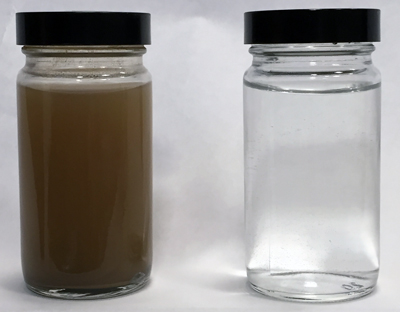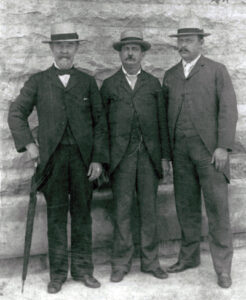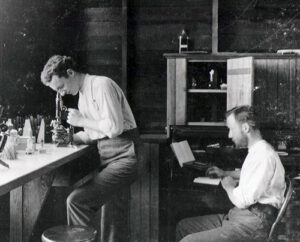Home / Filtration Experiments
Filtration Experiments
Beginning in 1865, for more than 40 years, Charles Hermany, Louisville Water’s chief engineer, fought to realize his dream of supplying filtered water to Louisville.
 Filtering Water: A History
Filtering Water: A History
The quest for pure water is almost as old as mankind. For centuries people knew clean water was important for good health. Early filtering systems tended to be on a small scale for individual families.
Odd as it may seem, the first large scale filtration operations were not intended to make water safe for people to drink. It was the manufacturers who needed to filter the dirty and polluted water in the rivers for their products.
Debating Bacteria
When Louisville Water first started operating in 1860, little was known about germs and bacteria and the harm they could cause. Theodore Scowden, Louisville Water’s first chief engineer, chose the site upriver from the city to make sure the water we supplied would be “free from town drainage and any contaminating influence that could, in the least degree, impair its pure and healthful qualities.”
Scientific advances in the latter half of the 19th century proved that waterborne bacteria existed. This bacterium could make people sick and was often deadly. People became afraid to drink the water they had been drinking their entire lives.
 Hermany’s Quest
Hermany’s Quest
The new debate over bacteria in water renewed Charles Hermany’s decades old quest to filter Ohio River water. Hermany first broached the subject in 1865, and for decades after he called attention for the need to filter water.
1865
Frustrated over supplying basically raw river water, Hermany proposed the need to filter the water. He stated “clear water” as “necessity” for cooking, bathing and drinking and an “absolute necessity” for manufacturers’ of higher grades of textiles and fabrics.
1875
When making the case for a new and larger reservoir, Hermany wanted to include filter beds. He expressed the need for experiments to determine the size of the filters and what materials to use.
1882
Hermany was finally able to put his ideas into action and began his first filtration experiments. Two filter tanks 12 feet in diameter and 12 feet tall were built near the Crescent Hill Reservoir.
1884
Hermany’s experiments proved more difficult than expected and “(t)he question of a filtered water supply … is still an unsettled problem…”
1889
Defeat seemed inevitable when it was reported that no system of filtration “has been practically tested, used or adopted for filtering successfully the water supply of any city the magnitude of Louisville….” Company officials agreed that they could not justify building any type of filtering plant.
1894
As other cities around the nation expanded into filtering their water supply, Louisville Water officials sensed their decades long dream of a filtered water supply was close at hand. They renewed their call for filtration studies. Hermany’s previous work paved the way for the filtration experiments headed by George Warren Fuller.
The stage was set for George Warren Fuller to begin conducting a series of filtration experiments that would finally solve “the vexing question of filtration” ultimately revolutionize water filtration techniques throughout the world.
 Filtration Experiment: 1895 – 1896
Filtration Experiment: 1895 – 1896
In late 1895, George Warren Fuller reported for duty as Chief Chemist and Bacteriologist. The goals of the experiments were to: 1. Study the advantages and disadvantages and costs of available coagulation techniques (chemically and electrically) finding economical way to filter water.

